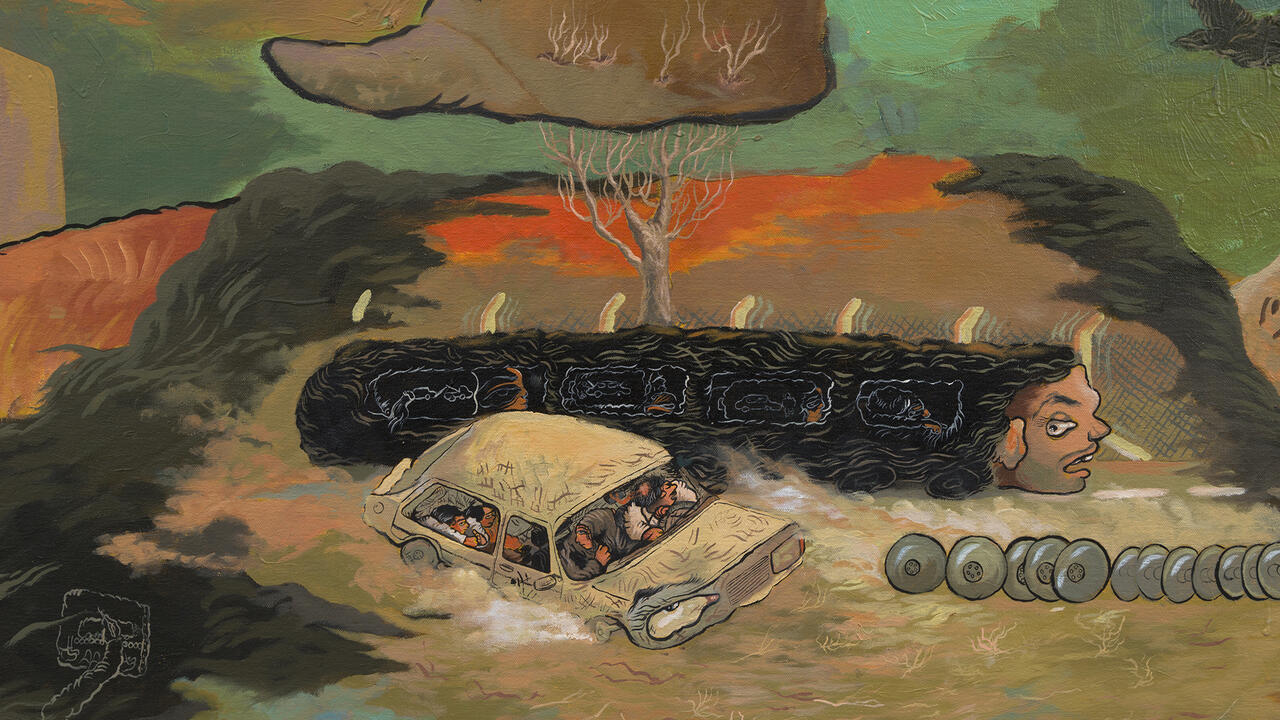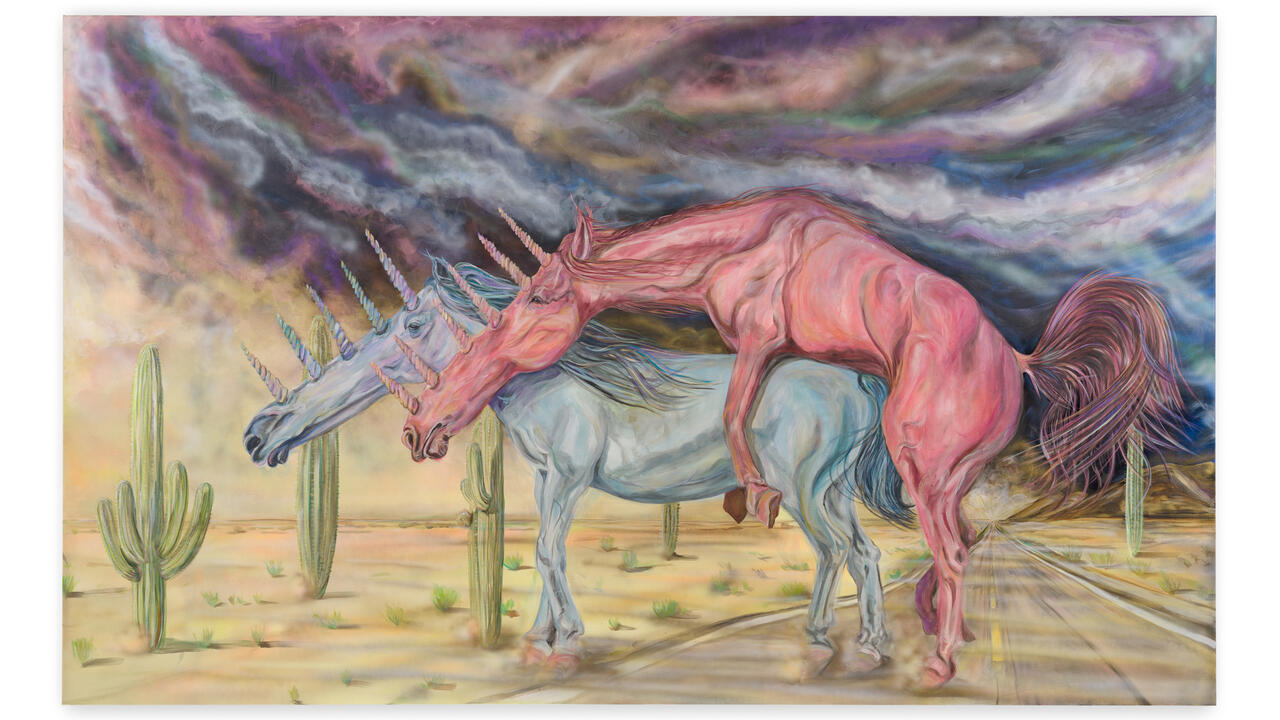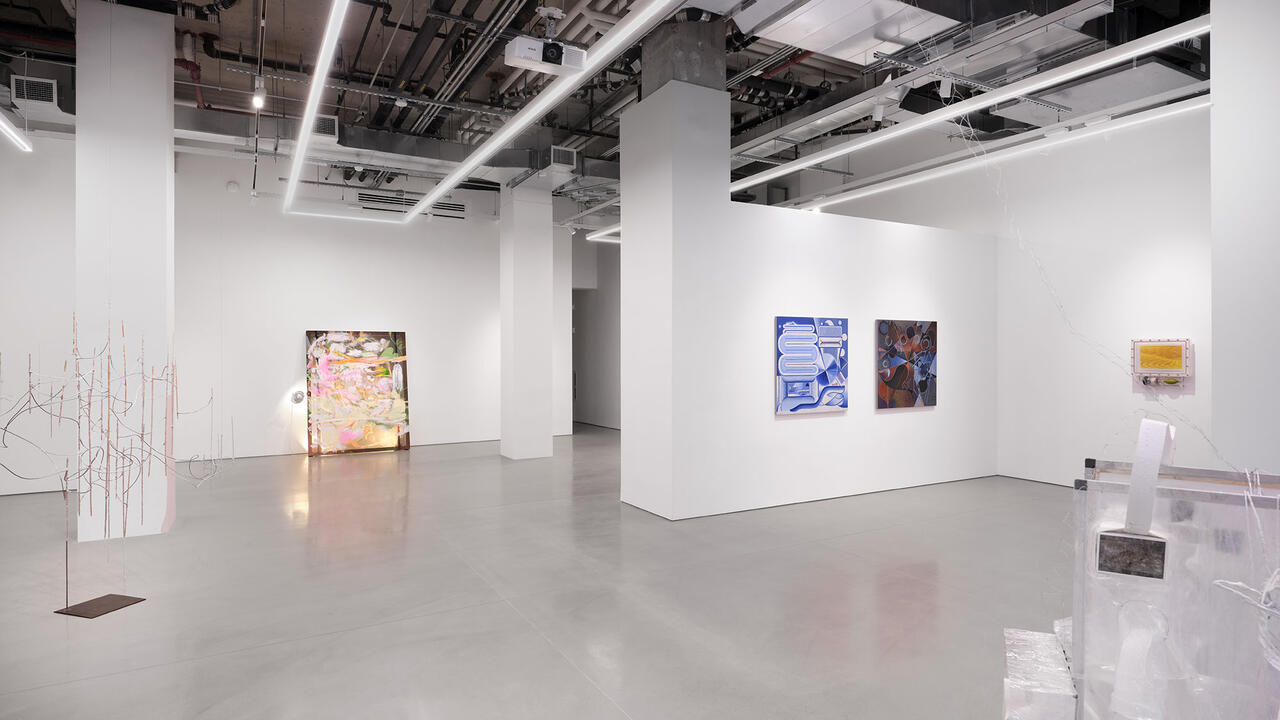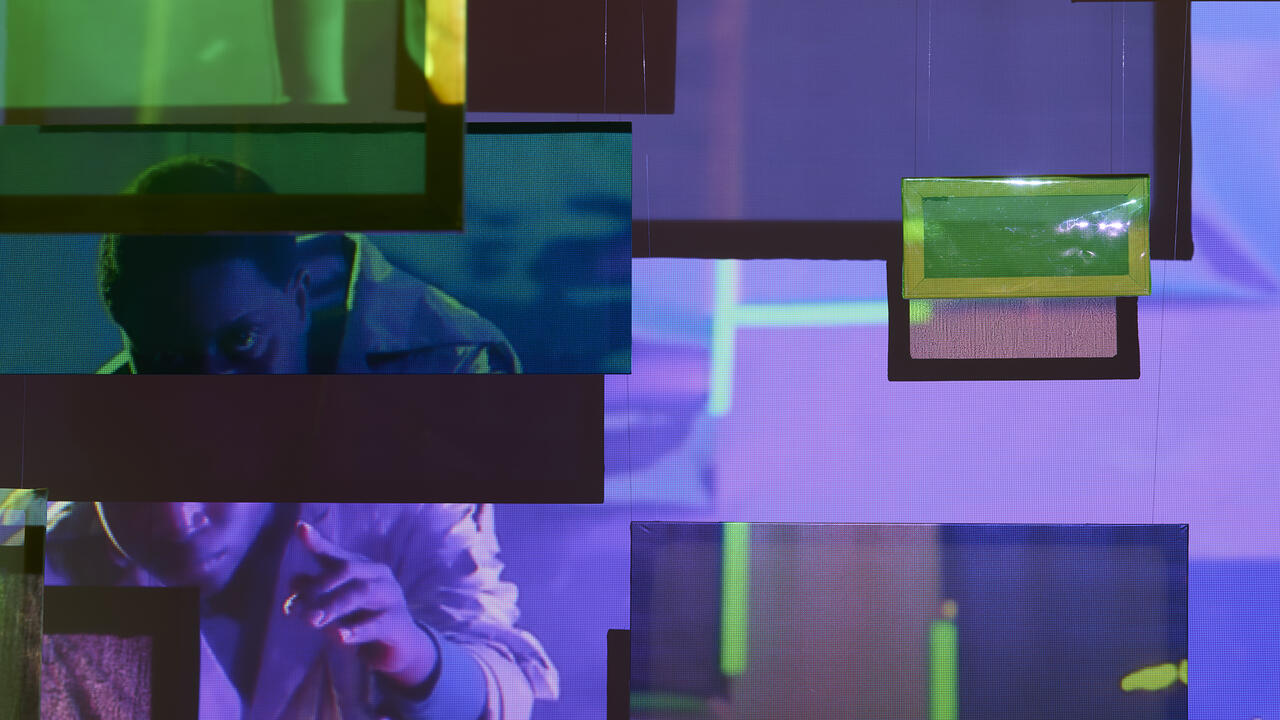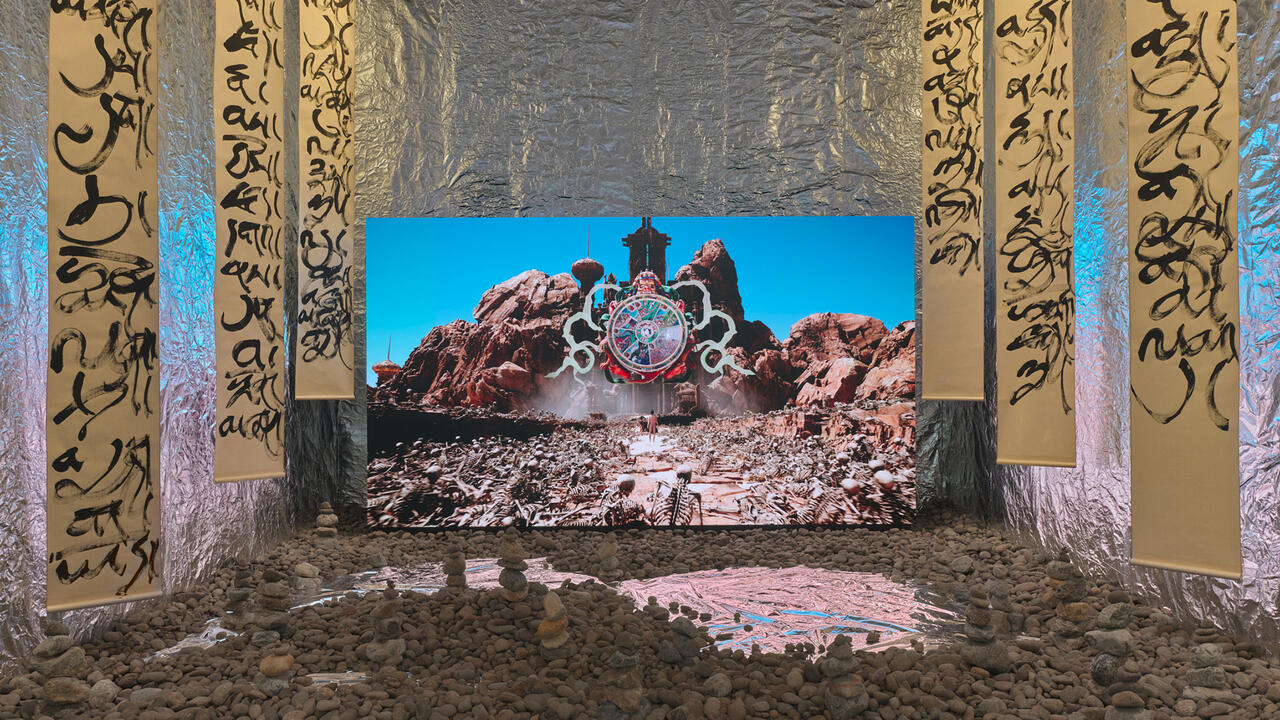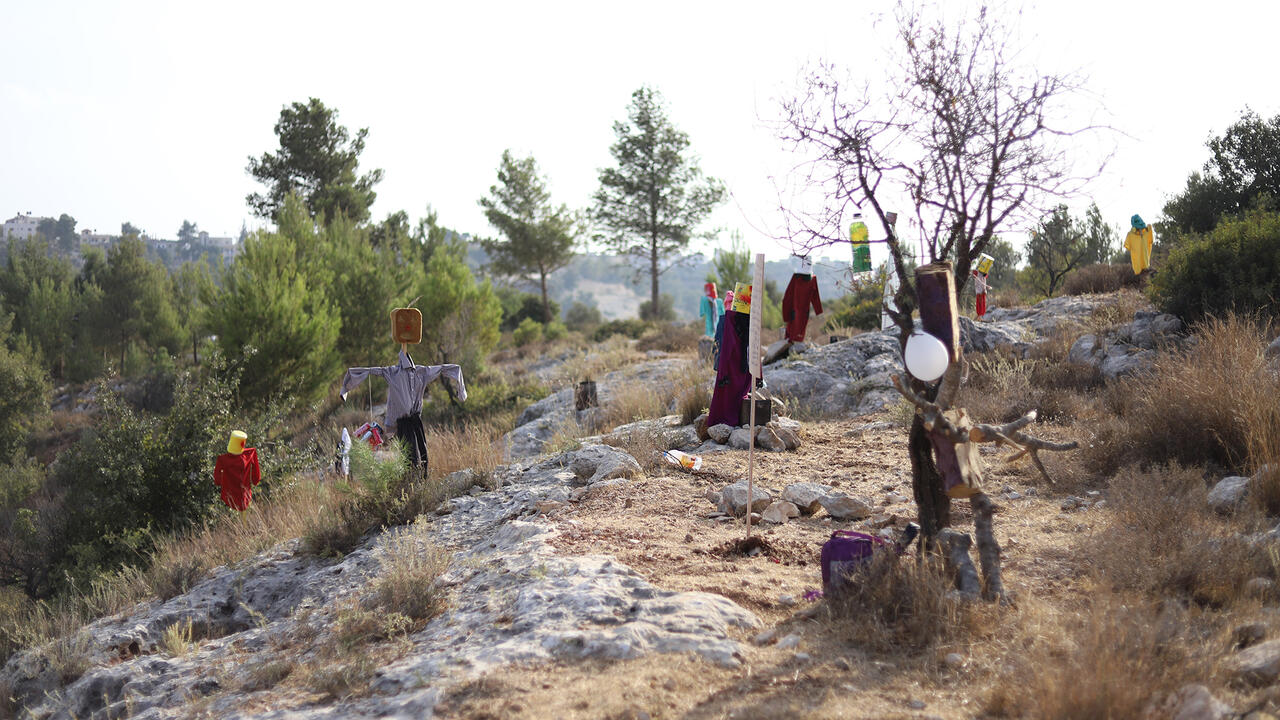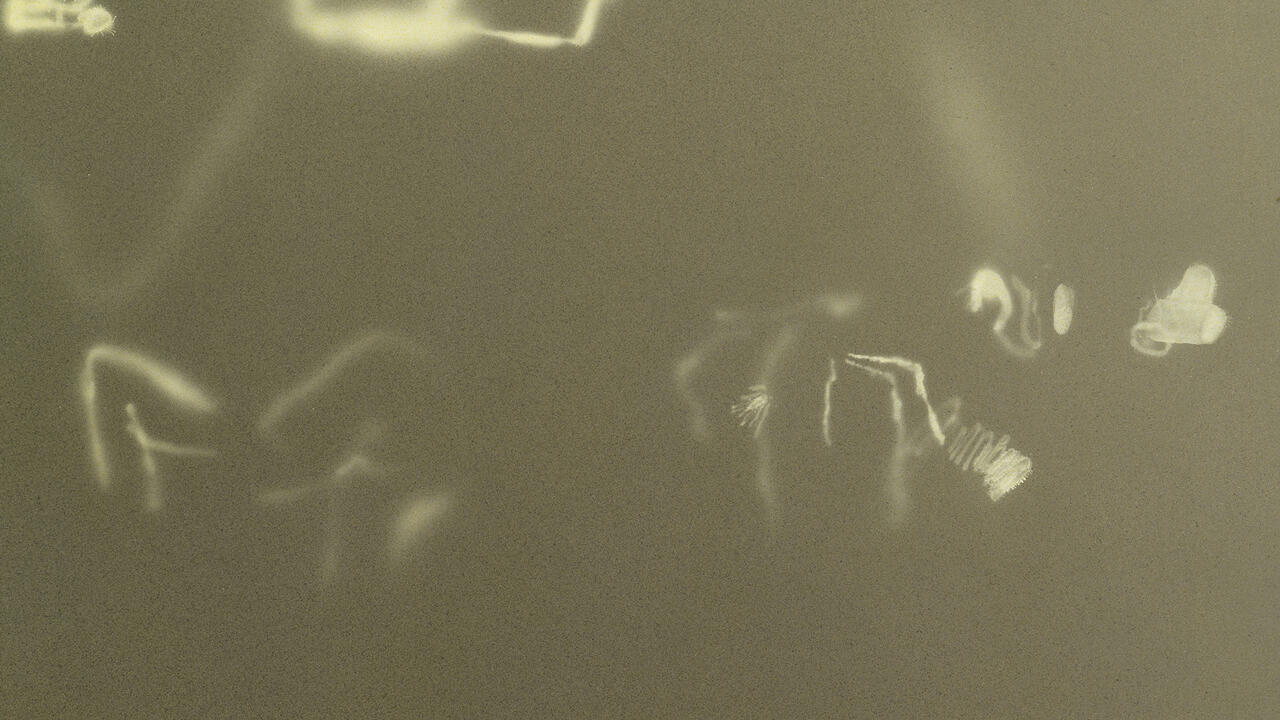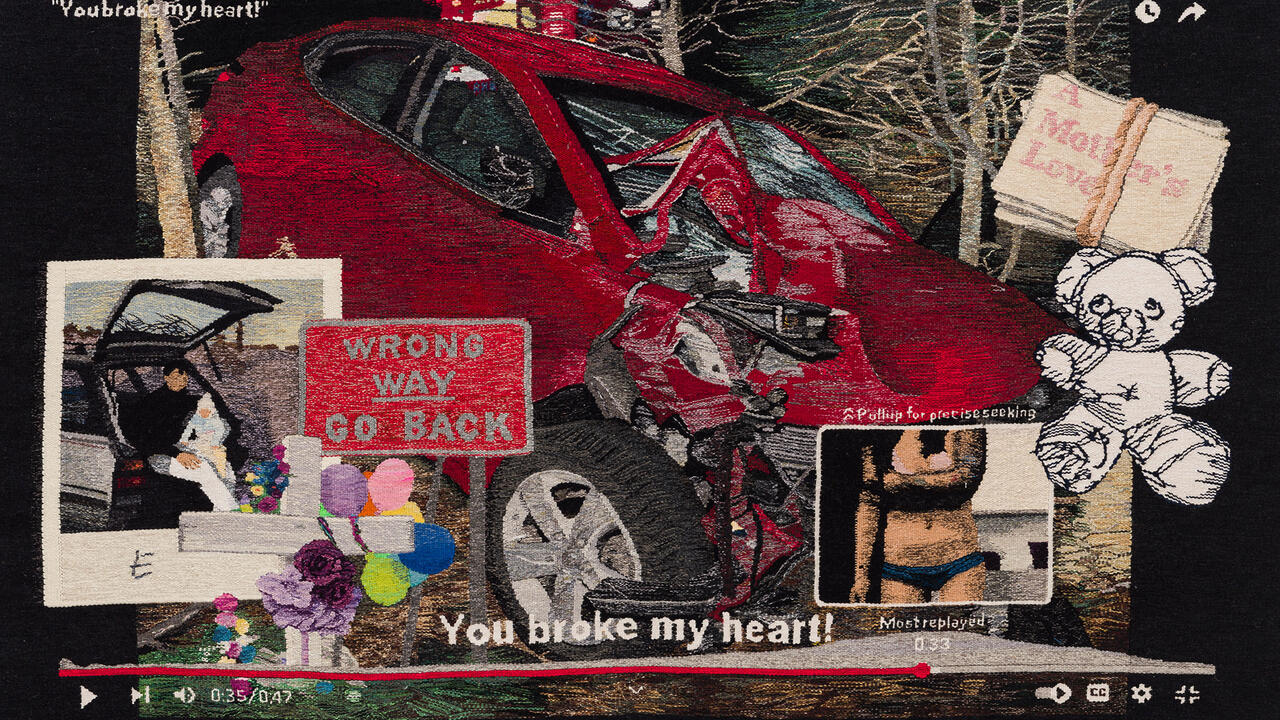Cecilia Vicuña's Spatial Poems to Female Resilience
At Lehmann Maupin, New York, the artist's immersive installation and paintings from the 1970s commemorate forgotten indigenous histories
At Lehmann Maupin, New York, the artist's immersive installation and paintings from the 1970s commemorate forgotten indigenous histories

You enter Cecilia Vicuña’s exhibition at Lehmann Maupin, ‘La India Contaminada’ (The Contaminated Indigenous Woman), as if stepping into a forest. Many of the 70-year-old artist’s hallmark, enveloping skeins of soft wool, or quipus, hang in a thicket from the ceiling of the front gallery. In Vicuña’s native Chile, as well as Peru and Colombia, quipus – usually masses of knotted or braided rope – are utilized by indigenous Quechua people in the absence of a written alphabet. In the ancient Inca Empire, quipus were used to take administrative records, collect census data and calendrical information, conduct trade and warfare. They could also be narrative, in ways that still haven’t fully been decoded. Often, they were painted: crimson for the Inca, yellow for gold, green for the dead. The red of Vicuña’s Quipu Viscera (Visceral Quipu, 2017) is almost the colour of menstrual blood. Vicuña describes her quipus as ‘poems in space’, as aesthetic as they are semiotic.
Vicuña’s monumental Disappeared Quipu (2018), concurrently on display at the Brooklyn Museum, hangs amidst a dazzling selection of ancient Andean robes and quipus. In the gloom of the towering gallery, light flits across the installation’s wooly surfaces, projecting images of colourful gods and animals from those textiles. If the work is a eulogy to the narrative quipu, the projection’s ghostly presence seems to commemorate not just a lost language but all people killed by colonial genocide.

Of the works at Lehmann Maupin, Vicuña’s paintings, however – mostly completed in the 1970s – are perhaps most surprising. The dreamy symbolism of Pantera Negra y yo (ii) (Black Panther and I, 1978) could be drawn from the subconscious of Leonora Carrington: in it, an enormous black panther stalks a nude self-portrait of the artist, while she casts an arm and her hair over headless twins standing beside her, as if trying to contain her own bodily urges. At the time she completed the painting, Vicuña had recently arrived in New York, where she attended meetings of the Black Panther Party. The show’s star painting, Leoparda de Ojitos (Leopard of Eyes, 1976), depicts another cat: a snowy white leopard with human hands, feet and labia, fur studded with glowing yellow eyes. ‘One could think that it is the “eyes of instinct” that open when we allow ourselves to be carried away by a form of knowledge that is richer and deeper than rationality,’ she wrote of the painting in 1977. The Andean mountain cat, now heavily poached, once thrived in the Inca Empire, which revered the regal predators. Vicuña’s feline is a paragon of strength, clutching two ethereal trees – one teal and one pink – less for support than as if to give them life.
Vladimir Lenin and Colombian socialist leader Camilo Torres Restrepo are memorialized in two paintings on display near Vicuña’s most overtly political work, La Mulata Costeña de Colombia (The Coastal Colombian Mulata, 1977). In the work, a mixed-race woman in a lacy blouse strides confidently, her legs and torso densely tattooed with images of farmers and factory workers, guerillas and paramilitary from North and South America. Although the daughter of the enslaved and colonized, she carries the morning sun in her left hand, glowing resiliently over brutal violence. Again, Vicuña foregrounds women, in a work that is both a celebration of female strength and a revolutionary call.

Quipus map Quechua cosmology and culture, like two great nets layered one atop the other, forming a branching structure that mirrors our modern networks, and the mycelium that link many living plants and fungi. Science has proven nature’s system of communication far more complex than we realized, confirming central Inca beliefs. Gilles Deleuze and Felix Guattari called this system a ‘rhizome’ – a ‘body without organs’ capable of transmitting, like a quipu, information of far deeper meaning than what passes by on its surface. My fingertips tingled as they touched Quipu Viscera, but I felt much more than that. I felt safe. I felt loved.
Main image: Cecilia Vicuña, Quipus Visceral, 2017, installation view, 2018, Lehmann Maupin, New York. Courtesy: the artist and Lehmann Maupin, New York/Hong Kong/Seoul; photograph: Matthew Herrmann










